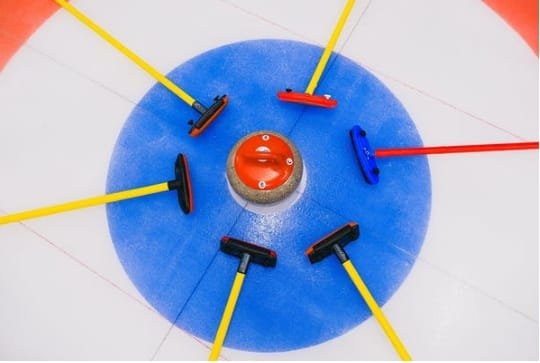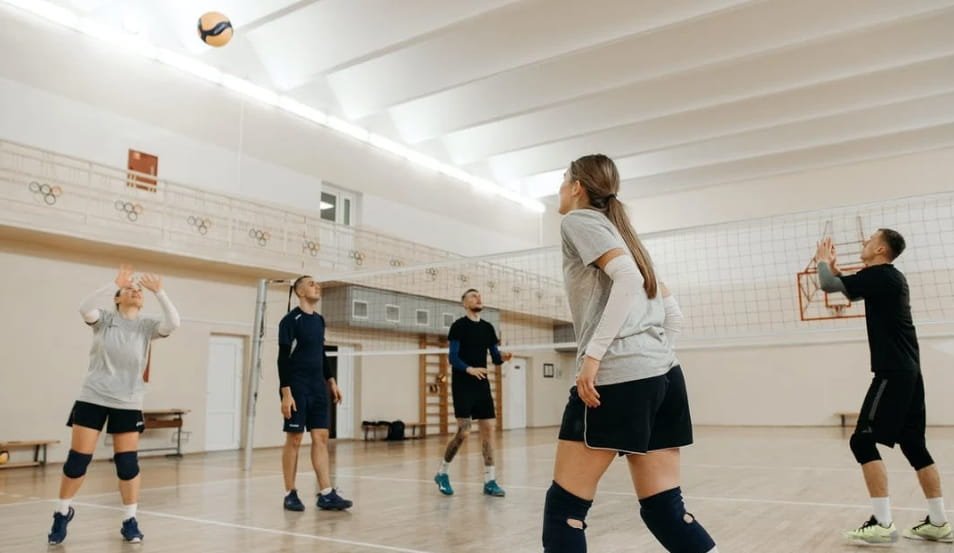
by admin | May 11, 2022 | Mind
Mnemonic Tricks
What Are They & How Do They Work? We all understand the value of good memory. Being able to rely on your ability to remember a lot of things leads to a much easier life. Whatever way you look at it, however, having all the information you’ve accumulated ready to use at a moment’s notice can help you out in tricky situations.
No more moments like “Oh, I forgot the alarm code” or “I don’t remember what I needed to buy, and I’m already at the store.” It seems like a dream, doesn’t it? Not only that but being sure you’ll be able to memorize new things or more complicated ones is definitely a boost to your self-appreciation.
This is why mnemonic techniques are gaining popularity. They help you study new things as well as recall and affirm old information. In this article series, we take a more detailed look into what mnemonics are and their different types.
Simple Definitions
Mnemonics are any and all strategies used to better store and remember information through specific techniques. They are essentially shortcuts of encoded information that are easier for the brain to use than the original versions. Mnemonics can come in different forms and don’t follow any particular rules.
Generally speaking however, they take advantage of our mind’s ability to remember specific types of information. For instance, we are much more likely to remember something that sounds funny or peculiar than just a list of words. This is the principle on which most mnemonics rely.
Origin Of The Word
The roots of the word are Greek – something which is expected considering that probably the first people to use mnemonics were the ancient Greek philosophers and teachers.
The word means “of memory” and is tightly connected to the Greek goddess of remembrance, Mnemosyne. She is most famous for being the mother of the Nine Muses, which makes a pretty cool connection between talent and memorization!
History
Although we cannot pinpoint the exact moment in which mnemonics were first used, we can definitely say it was in Greece. Plato, Aristotle, and later Cicero were some of the first people who believed this is a form of art and one which could help a lot of people.
They sure were right.
The method that was used both there and in the Roman empire for a long time was that of imaginary cities and houses, each of which held a different piece of information (similar to how you fill your home with furniture).
Each item was given a symbolic associative meaning, which made it easier to remember. The method itself is called the Loci method, and the places imagined were often described as mind palaces. It is still widely used to this day.
Later (in the 13th century), the first books about mnemonic techniques were published. Some new methods were introduced between that time and the following three centuries, but the most notable one was in 1648 A German scientist shared a technique that he designed – he used consonants to substitute figures. This was revolutionary because it was the first time someone could include numbers in mnemonics. Two hundred years later, an entire alphabet was designed based on this technique.
Famous Mnemonists

Needless to say, many people embarked on a memory-training journey when they learned about this fascinating concept.
Here are some of the most famous mnemonists!
Giordano Bruno

He was the first one to coin the term “art of memory,” which refers to mnemonic techniques he used. He lived in the Roman empire and even wrote down the essence of his preferred methods in one of his works.
Lambert Schenkel
Lambert Schenkel lived in the 16th century and was deemed a sorcerer by the University of Louvain because of his memory skills. He was using mnemonic techniques he later described in his book. After the public read his explanation, he was no longer seen as a conduit of magic and kept on improving his skills.
Dominic O’Brien
Thirdly, Dominic O’Brien is the person who currently holds the record for the biggest random sequence memorized. In 2002 he committed to memorizing 2808 (or 54 packs) of playing cards after only seeing each card once. Most people can’t believe he actually managed to repeat the entire sequence to this day.
Final Thoughts
We think we can all agree that mnemonics are pretty cool.People have managed to do some incredible things thanks to the techniques used in this field. In part two of this article series, we outline the most common techniques and give some examples in order to help you understand them better.
We are sure you will be able to find the right ones for you and start using them to make your life easier in one way or another!
See you in part two!

by admin | May 10, 2022 | Mind
How to Set Correct Goals for You
Many people fall into the cycle of setting goals that they never complete. This could be because they have no idea what they want, or in other cases, don’t know how to attain their targets. A wrong approach towards goal setting is a major cause of these challenges. Whatever you set out to achieve, it is necessary to know how to set the right goals and pave your way there.
In this article, we will help you learn the importance of creating goals, and more importantly how to set correct goals for YOURSELF. So let’s have a look right away!
The Importance of Goal Setting

Effective goal setting is a crucial step in shaping your desired future and developing the motivation and discipline to put in the actual work. Here’s why goal setting is important.
- It Improves Focus
Goals help to present a clear picture of your plans and enable you to focus on the important aspects of your journey.
Without goals, you lose direction and so, goal setting may help you recognize the areas you need to improve on and determine the actions and path needed to bring you closer to your aim.
- It helps you track progress
To measure how much success you have attained, you need to set well-defined goals. It is easy to get discouraged when you feel you have not achieved enough, but tracking progress makes you notice those little strides which is a confidence booster.
Goals are practically an approximation of the end result caused by your action, so tracking your actual results opposed to your goals, is important!
- It Curbs Procrastination
A clearly envisioned goal gives you an inner drive to actually get up and do what has to be done. Those clear goals will keep you accountable and motivated to get things done at the appropriate time. Without a doubt, goal-setting is a great way to beat procrastination for the better, so make use of it!
How to Set Correct Goals and Achieve Them

To realize your goals, you need to know how to set them. Take a look at the following steps to aid you in the process.
- Determine your vision
Your vision is the final destination and goals are the steps that take you there. If you pursue too many goals at the same time, you might not achieve any significant final end result, because you’re trying to be the jack of all trades! So, before setting that goal, determine if it is something you want and would be willing to commit to.
- Create SMART goals

Once you have streamlined your purpose, make sure your goals fit into the SMART criteria. In essence, your goals should be;
They must be clear and precise, you should know the why, when, how, and who of all your goals. Generalized goals are a recipe for failure.
Include milestones that can be measured and evaluated in some way that will help track your progress.
Ensure your goals are challenging and achievable, as setting impossible goals will only leave you disappointed.
Your goals must be consistent and in line with the direction you want your life to take. This is important for motivation.
There must be a deadline for whatever it is you desire to achieve. This keeps you on your toes and generates results quicker.
For example, instead of saying “I want to get fit (general)”, use the SMART rule to say “I will exercise for 30 minutes 5 times a week for the next 6 months”.
- Write them Down
Making just a mental note of your goals might not be sufficient. You have to make them real by writing them down or creating vision boards.
The more you see your end goals, the more you are motivated to work towards them.
- Create an Action Plan
This is an important and yet overlooked step. An action plan helps you break down your goals into smaller bits so you develop the best strategy for each step.
You can go back to your action plan from time to time to track your progress and determine areas for improvement.
- Schedule and Commit
Setting deadlines for your goals conditions your mind to know that you are fully committed to the task. If the time frame is too flexible, you will never come around to accomplishing that goal. Use a timeline to create milestones and try your very best to stick with it.
Conclusion
Goal setting combined with proactive steps and maximum effort gives you a smoother path to success.
Do take the advice here and consider it, as it may help you realize thoughts that can help you set the correct goals towards achieving your ideal future.

by admin | May 9, 2022 | Mind
Misconceptions About Psychology Professions
What People Believe And How It Actually Is Psychology has been a part of our history for centuries, and it’s essential to many different aspects of our daily lives. Recently psychology has gained traction in pretty much every direction – the number of students with this major is hundreds of thousands, making it the fourth most popular major in recent times.
Despite all this however, psychology as a profession is still battling many stigmas and misconceptions. In the following artice, we will do our best to shed light on some of the most common myths concerning the different types of careers in psychology. And, in part two of this article series, we will delve deeper into a more specific question – What is the difference between a psychiatrist and a psychologist?
The Biggest Misconception

In every major thing we talk about, there is one HUGE misconception and that doesn’t fall short for psychology neither. The biggest misconception in that regard is that all psychologists are the same. This has nothing to do with the truth and is the easiest one to explain. Think about it – there are countless different professions that deal with psychology.
For instance, clinical and forensic psychologists – one deals with treating people with anything from everyday issues to mental disorders and does so in an office setting through a span of different kinds of sessions. The other is tasked with understanding the thought process of criminals, both alive and dead, and working on making their psychological profile for the law system.
This example alone proves that although you may have the word “psychologist” as part of the description of the profession, this does not mean that they all do the same thing.
Clinical Psychologists, Therapists, And Psychiatrists

Now let’s move on to some other misconceptions about psychology professions that are worthy of discussing. The below-mentioned ones, state that clinical psychologists, therapists and psychiatrists…
Are All The Same
This is simply not true. Clinical psychologists provide mental and behavioral health care to individuals and families in the form of counseling and generally have a doctorate degree, but cannot prescribe medications. Although therapists majorly deal in family and relationship therapy and are not required to have a Ph.D., they cannot give medicine either.
Psychiatrists are medical doctors that have completed a 4-year medicinal study in psychiatry and are responsible for prescribing medications. The three often work together or in different combinations but are far from the same.
Are Just Explaining Common Sense
Common sense does not require a Ph.D. or any sort of degree for that matter. Looking back to previous breakthroughs in the history of psychology, we often see that the things we now deem logical and sensible were not at the time. Such mistakes continue to this day, and it’s the professionals’ job to point out why things that seem logical can sometimes have the opposite of the desired effect.
Are Only Useful To People With Extreme Issues
Although many people go to therapy because of mental illness, this is far from universal. Some people go for personal development if they need support to navigate a significant change or when they want to improve a specific aspect of their life.
Going to a psychologist does not mean that something is inherently wrong with you in any way and should never be looked at through this type of negative lens. You can visit your psychologist just for the sake of discussing and getting a third-person perspective!
Don’t Need Any Sort Of Education
Though there are positions that do not require a doctorate or Ph.D., these people are professionals that have had their fair share of studies. In the same way you can have a medical nurse and a doctor, there are different stages and degrees for the different careers, but one thing is for sure – To practise, formal education is necessary.
Are Tasked With Fixing The Person
The purpose of these professions is not to fix, cure or magically change their clients. These people act as the client’s support system and guide throughout their individual journey. Although they are a big help, the change comes from that person in particular and that person alone. In other words, change is completely autonomous progress of the client, which is guided by the professional’s help.
In a sense, the professional is a catalyst for the person’s change – not the main cause of it.
Are Just There To Listen
Throughout a counseling session, it’s almost impossible for just one part to talk, and that’s never the point for the psychologists. They ask questions, give advice and focus the client’s attention on important subjects.
The purpose of the session is to create a safe environment in which both sides can establish an honest and positive connection. And that cannot work if the conversation is one-sided, simple as that!
Don’t Have Any Personal Problems

Even though these people put a lot of time and effort into understanding how our brains work, they’re not immune to anything. They still have blind spots, issues and want to change for the better. They’re people just like us, regardless of the years of studying, and like all people, they aren’t perfect. In fact, you’ll hear a lot of professionals in the field say something along the lines of “Do as I say, not as I do!”
What About Other Types Of Careers?
Besides the 3 routes we touched on above, there are other misconceptions that exist in the world of psychology.
For instance, the 3 main ones about other types of careers in psychology are that:
- They don’t exist!
- They have NOTHING to do with science!
- They DON’T deal with empirical evidence, nor statistics
And well, to be frank – These are flat-out wrong! Let’s explain why
Other Types Of Careers Don’t Exist?
Simply not true! You can be a social worker, a forensic expert, and many more. A psychology degree can also be helpful in writing, marketing, and even media. Pretty much any profession that deals with people has some sort of connection to psychology.
They Have Nothing To Do With Science?
Neuropsychology is maybe the best example to battle this misconception. It’s the study of the physical brain and the connection between it and the mind. This combines biology, chemistry, and psychology and is most certainly a science in every conceivable way.
They Don’t Deal With Empirical Evidence Or Statistics?
All researchers deal with these parts of studies. Psychology deals with a lot of quantifiables and, because of that, is connected to math and statistics.
Empirical evidence, on the other hand, is what a lot of experiments, studies, and theories are based on, so gathering it and working with it is a regular part of many jobs in psychology.
To Wrap It Up
Misconceptions are pretty common, and it’s no wonder there’s a lot of them regarding a subject as vast as psychology. However it’s important to educate those that believe them and do so in a kind and respectable manner. Learning is the way we evolve and improve our future, and debunking something you used to believe is a big part of that.
Now let’s move on to part two of this article series, where we highlight the differences between psychologists and psychiatrists.
Ready? Let’s go!

by admin | May 8, 2022 | Mind
How to manage a Busy Schedule
“I Don’t Have Time” | Part 1 – How to manage a Busy Schedule
When it comes to utilizing training & eating well for the goal of enhancing the quality of life, “I don’t have time” is the most common excuse people affirm to themselves. More often than not, even if you suggest that the benefits of an optimized training and nutrition plan can outweigh the time invested, people continue explaining how busy they are.
If you’re already over this and are ready to take the next step for your greater good, keep reading. In this article, we are going to give you actionable tips on how you can integrate a healthy lifestyle into a busy schedule.
Why Should You Do This?
Well, quite frankly your success in every aspect of life is primarily based on your physical and mental wellbeing. In the modern-day lifestyle, you get robbed of quality movement and get access to a load of junk food which in turn may impact the quality of life. In a sense, being fit and even muscular is something completely natural…
Nowadays however the industrial cities impose us on unnatural living patterns, thus making fitness & wellbeing “someday goals” for most people… At the end of the day, your body is a community of cells that you technically govern and nurture with the things you put into the body & the ways you use it.
You have no valid excuse to not keep your community healthy!
Now let’s talk about training and possible ways to integrate it into a busy schedule (yes, even if you work 12 hr shifts.)
How To Train Efficiently

For most people, it feels like forever to get to the gym, warm-up, do the workout, get back home, shower & eat. And the truth is, all of this can be quite time consuming so your best bet is to optimize the whole process.
Here are some tips which you can use right away:
- Find a local gym that is 10-15 minutes away from your home/workplace
- If you have basic home equipment, use it instead of going to the gym every now and then
- Train 20-30 minutes every day, rather than 3 hours at once every 2-3 days
- Do short, intense workouts to save on time and still reap benefits
In essence, if you are a busy individual, there are ways to get around your schedule and fit a couple of training hours per week. After all, this is for your greater good and it pays off big time. One question still stands though – What is the best time to workout? Some people have a schedule that allows them to train during different parts of the day, so let’s have a look at each one and analyze them.
Training in the morning

Upon waking up, your body is in a sense, fasted, meaning that your glycogen levels are lower than usual and therefore, your strength performance would be suboptimal. Nevertheless, training in the morning is a good way to kickstart your day, as it will give you tons of energy & mood (especially after your breakfast afterwards).
If you can only spend 30-40 minutes for a workout upon waking up, before breakfast, there is nothing wrong with that, just bear in mind that your performance will not be as good, due to the lower energy levels.
Training in the afternoon

As you wake up and get into your day, more and more sunlight passes through your eyes.That sunlight signals the pineal gland to secrete serotonin, which is a daytime neurotransmitter. In other words, serotonin makes you feel more awake, alert & gives you energy and mood for your daily activities. So, you see, your organism is supposed to be fine-tuned to the sun & earth’s cycle and there are periods when your cardiovascular efficiency, muscle strength & nervous system are the most active.
This is generally in the afternoon, between 15:00 & 17:00. So, if your schedule allows you to train in the afternoon, this would be your optimal choice. Not only will you sync with the highest biological activity time window of the body, but you’ll also have food in your system and thus, more energy, as opposed to training in the morning.
Training in the evening

Just like the previous two, training in the evening has its advantages and disadvantages. For instance, workouts after an entire workday can be a massive stress reliever! On top of that, night time is the recovery time for the body, so with an intense workout, you are priming all the recovery mechanisms of your body and it becomes easier to fall asleep.
However, if you do your workout too soon before bed, you might disrupt your sleep cycle. This is why we recommend training no less than 3-4 hours before bedtime.
Conclusion
Training and eating well should not be someday goals but more so tools that you use to optimize your performance in all aspects of life, as well as your overall living quality. As your health should be your number 1 priority, it is important to consider how you can optimize your training process, so that the benefits would outweigh the time invested.
The best practices to do so are to find a local gym, do shorter workouts but more frequently, but also utilize any equipment you have at home, or even your bodyweight.
Furthermore, you can find “time gaps” in your life and replace those with more productive activities like training and cooking. For example, most people spend at least 50 minutes a day on their Instagram feed and 1 hr a day on watching TV/YouTube.That’s 2 hours you can easily use to get a workout in and prepare your food for the next 3 days.
Ultimately, proper and regular training sessions will quite obviously optimize your fitness & mood and thus, make you feel better and experience mental clarity, which you can apply anywhere you want. In part two of this article series, we are going to tell you more about nutrition on a busy schedule and how you can actually spend less time & money to eat healthier and better.
See you there!

by admin | May 7, 2022 | Health
Journaling 2: Gratitude Journaling
Turning Gratitude Into a Skill. Gratitude is often looked over as a skill for well-being and healthy emotional intelligence. Thinking of gratitude, most people imagine someone having an overwhelming abundance of prosperity in their life, and like most things, people wait for accomplishments in order to start being grateful.
But that’s actually wrong. As humans, we always strive to move forward and achieve the next thing on our list. Unless you’re depressed, the chances are that you won’t be happy once you meet your goals simply because it’s in our nature to strive for more. We tend to get more happiness out of the expectation than the achievement.
Things Can Always Be Worse
When was the last time you celebrated the fact that you’re simply alive? Or the morning sun? Or that someone smiled at you on your way to work this morning. Small things like these, when thought of deliberately, can help you start noticing positive patterns in the world. So remember – Whatever situation you’re in, good or bad, that too shall pass!
Gratitude Expressed On Paper

As explored in the first part of this article series, if we want to get better at something or understand an idea, we need to write it down. The thing we want to get better at here is recognizing the beauty in the world and to train ourselves to be happy. This is where gratitude journaling comes in. Gratitude journaling is a recollection and an archive of all those small moments in your life that at first glance seem negligible.
However, once you start piling them up, you start noticing more and more that there are plenty of reasons to smile, no matter how dire the circumstances might be. Thoughts are fleeting, and that’s why this is gratitude journaling, not gratitude thinking. Although just thinking about it might bring some benefits, thinking is an automatic process that does not require you to do anything physically.
Writing, however, creates a ritual and a habit. Apart from that, writing creates an archive of those grateful thoughts that you can come back to if you’re feeling down. An archive like that can’t be built on thoughts simply because we don’t have that capacity as humans. You can only store so much in your head.
How To Start Gratitude Journaling

Now you’re probably wondering – “Alright, how can I get started?” And well, the truth is you don’t need much to get started. It’s simple, but not easy. All you need is a notebook and a pen. Don’t overcomplicate things.
You don’t need a new notebook with custom embroidery that says Gratitude Journal in gold letters. Use an old one you already have and rip off some used pages if you have to. Remember, this exercise is about being grateful for what you already have. Once you have all the necessary tools, sit down and think for a minute or two about things that you are sincerely grateful for.
The fact that you’re alive and reading this is a big one. Once you cover all the big ones, you can become more specific and personal. Now, dedicate a few minutes to writing down those moments or things you’re grateful for. Then take a minute or two to meditate on them and truly feel gratitude. Try to imagine life without your reasons for gratitude.
That’s it.
Repeat tomorrow.
The Toughest Part
The hardest part is creating the habit, and doing it every single day, trusting the process even on the days where you don’t want to do it, and the days you don’t experience some kind of immediate gratification. The most important part is thinking and staying present.
It’s tempting to just jot a few generic reasons down just so you can feel some kind of sense of achievement. You must resist the urge to rush things. Mindfulness is important here. Be mindful and take a few deep breaths. Think again about why you’re doing this. The key part of this exercise is coming up with reasons that are sincere.
Take-Home Message
This often forgotten practice is worth sharing with you because of how effective gratitude journaling can be for your mental health and physical well-being, as well as for those around you who benefit from an increase in positive energy.
In summary? Journaling seems like one of those things that may seem too good to be true but actually work! So take time out each day or week and put pen to paper – literally or digitally – and see what happens! And please share your experience by commenting below. What are some ways you’ve used a gratitude journal? How did it make a difference in your life?
Share your experience with us!

























